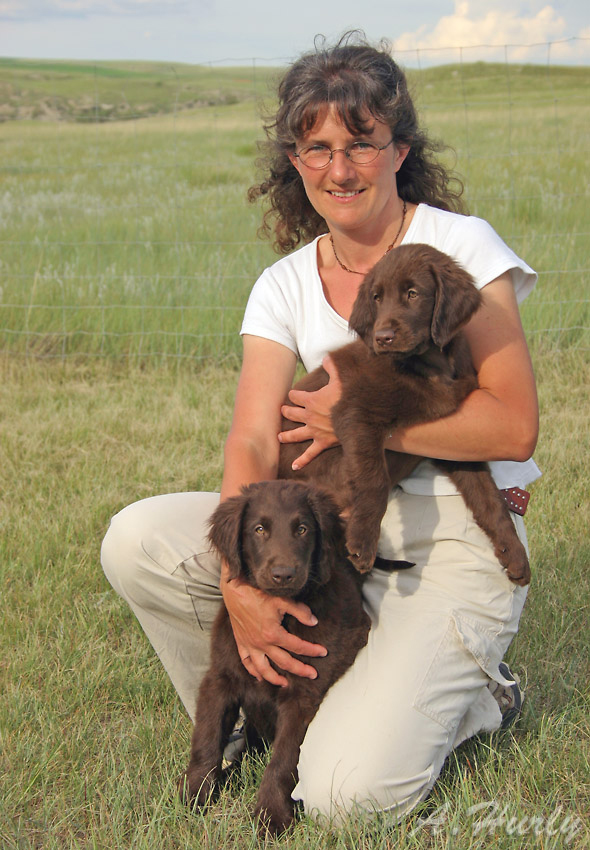
Breeder Spotlight #3 – Blazingstar Flat-coated Retrievers
What first sparked your passion for purebred dogs?
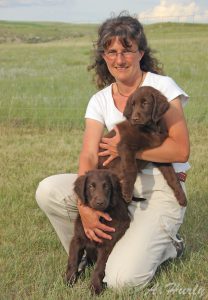
As a teenager, I had a beagle that I showed and competed in obedience with – it was through showing her and going to classes that I got to see many different breeds and fell in love with Flat-Coated Retrievers. Plus, both my husband and I are from families with long relationships with a variety of purebred dogs ranging from Dachshunds to Bloodhounds!
What is your breed(s)? When did you start breeding?
Flat-Coated Retrievers. After stalking them for several years, we got our first flat-coat in 1996 and bred our first litter in 2004. We’ve had 10 litters over the past 14 years. I should note that I am only one half of Blazingstar flat-coated retrievers – my husband, Andy, is an integral part of our dogs and breeding program.
Who was your mentor(s)?
Hans and Margareta Berin (Prairielight) have been our primary mentors and we have learned so much from them about Flat-Coats, structure and breeding/whelping/puppy raising. We got our first Flat-Coat from them and ended up with three dogs from them over the years, including one of our foundation bitches, Ch Prairielight Blazingstar Kini CDX JH WC RE SHDX. The Berins were instrumental in helping us import our other foundation bitch from Sweden, Ch Flatterhaft Foxy Brown CDX JH WCI SHDX. We also co-owned a Swedish import and wonderful stud dog with them, Ch O’Flanagan Alder CD WC RN. There are several other long-time Flat-Coat breeders in Canada, the USA and overseas that we also rely on from time to time for information about particular lines and/or issues. We are lucky that we have such a good network of connections in the Flat-Coat world and several very long-time breeders that allow us to pick their brains.
We all grow and change as we learn more as breeders. When you first began your program, what was your goal?
We strove to breed healthy Flat-Coats that are true to type both physically and mentally – dogs that can do well in the show ring and can also be great hunting companions.
How has your goal changed, and if it has, why has it?
I don’t think our goal has changed. I do think we have more tools available to us to meet that goal though. Plus there is an increase in information available on dogs around the world through the internet and also databases such as Flatcoatdata and now Betterbred.
Those of us who have bred awhile know it can be a rocky road full of challenges. Has there been a time in breeding you considered quitting?
Oh yes, several times. I think one of the most frustrating experiences was producing a litter where 3 puppies experienced GDV before the age of 4 years. It was one of our nicest litters physically and mentally, but it seemed clear that the GDV had a strong genetic component, so we didn’t end up moving on with anything from that litter. There have been other heartbreaks along the way, often relating to health problems and sometimes just pure bad luck.
What was one of your high points as a breeder?
It’s hard to pick only one – the “small stuff” such as an owner phoning to tell you how well their dog did on their first hunt feels just as good as bringing home the big ribbons from a show. Although for the latter, making a rather last-minute decision to drive to a US National Specialty and coming home with Best of Breed ribbon from the Novice class and a JAM ribbon from the Bred-by Exhibitor class ranks up there pretty high. I was also deeply honored to be asked to judge puppy and veterans sweepstakes at the US National earlier this year. Being able to get my hands on nearly 150 dogs was an amazing experience.
In the years to come, when someone is writing the history of your breed, how would you like to be remembered?
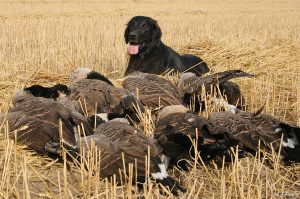
As a breeder who was open and honest about the dogs we’ve owned and bred and was willing to share the knowledge that we’ve gained over the years with others. And also as breeders that worked their dogs, as useful and successful hunting companions that helped to put a lot of food on our table!
We, obviously, are a company that empowers breeders to be conservators of their breed’s long term diversity and viability. How do you use this in your breeding program?
As both my husband and I have backgrounds in biology, genetic diversity has always been important to us, but until recently we’ve had to rely on pedigrees and coefficients of inbreeding. It was one of the reasons why we imported several dogs from Europe and used frozen semen from European stud dogs for several litters. However, due to the genetic diversity testing and Betterbred, we are learning that this may not have been achieving the goals we thought it was! Although I do think we established good breed type in our lines thanks to the dogs we used from the UK and Scandinavia.
Since using BetterBred, have you had any exciting keepers you would like to brag about?
It’s a bit too early in the game for us. We have had one litter since being involved with Betterbred and testing all of our dogs and it was not a highly genetically diverse pairing. For various reasons we wanted to do a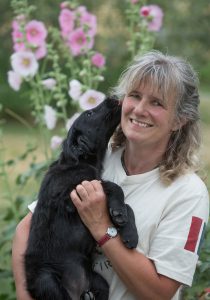 live breeding with a proven dog for this particular bitch’s first litter and that limited our options. However, one of the dogs we had been considering turned out to be the equivalent of a half-sibling (despite being only distantly related by pedigree), so we chose the less related dog as the sire. Check back in a few years!
live breeding with a proven dog for this particular bitch’s first litter and that limited our options. However, one of the dogs we had been considering turned out to be the equivalent of a half-sibling (despite being only distantly related by pedigree), so we chose the less related dog as the sire. Check back in a few years!
Do you have plans you’d like to share about your breeding program?
We are “expecting” a very special litter this Fall – one that brings together both of our foundation bitches and some of the best dogs we’ve owned and bred, so we are very excited about that. The sire is no longer with us but we were able to get his genetic diversity test done because one of the places where he was collected was savvy enough to store blood on “cards” for future testing. The combination is not going to produce hugely diverse puppies (in terms of inbreeding), but the dam has a high Outlier Index and is a good example of the breed. We will test the puppies and hope to be able to increase diversity in the next generation. We also have some exciting plans for next year, and a couple of our puppy owners that are going to venture into breeding. Two high-quality bitches that we bred rank as “unrelated” to a super dog that we also bred, yet are related fairly closely by pedigree. Physically and mentally they are great matches, so it’s nice to know that they will also produce diverse offspring. Those are pairings I would not have considered in the past, but we will likely move ahead with at least one of them thanks to genetic diversity testing and Betterbred.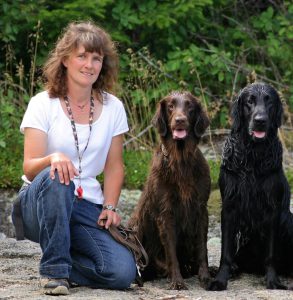
And finally, do you have words of wisdom to impart to those who have not been in the breed for long?
Breeding isn’t easy – be prepared for some heart breaks, but also for a lot of joy and satisfaction. I guess we knew that, going in to it, but it still takes you by surprise sometimes. It certainly is a roller-coaster.
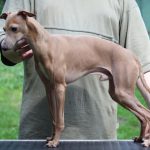 Previous Post
Previous Post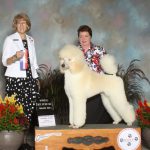 Next Post
Next Post


